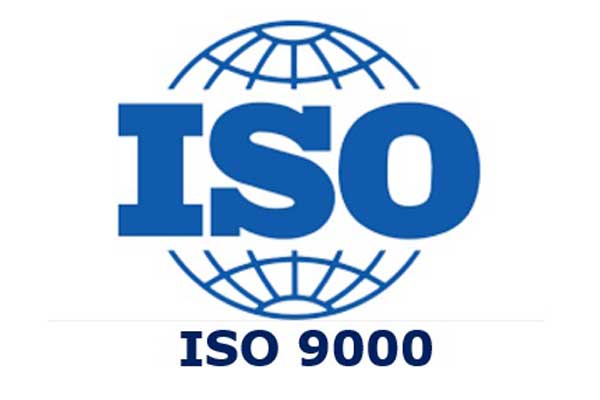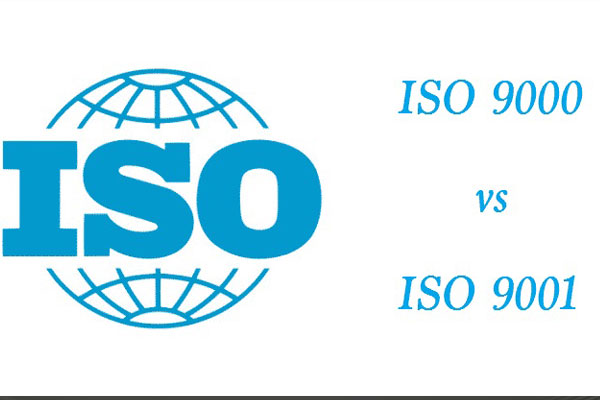As many of you know, ISO 9001 is one of the most popular international standards that govern quality management. It is a member of the ISO 9000 family; however, ISO 9000 is a different standard. To summarise, the main difference between ISO 9000 and ISO 9001 is that the ISO 9000 standard is an introductory standard that prepares the reader for ISO 9001. Let us read the following article to discuss what the two standards have in common and their differences.
ISO 9000: The series
ISO 9000 is a part of a family of standards, out of which ISO 9001 is the most popular. However, if we look at it from a technical perspective, ISO 9000 is considered to be an individual standard unto itself. It supplies the reader with pertinent knowledge, such as common terminology utilised throughout the ISO 9000 standards. Examples of such terminologies include:
- ISO 9000:2015, where the fundamentals, vocabulary and definitions related to quality management are outlined
- ISO 9001:2015, where Quality Management System (QMS) requirements are listed.
- ISO 9004:2018, where guidance to achieve sustained success or continuous improvement is provided.
- ISO 19011:2018, where the guidelines for auditing different types of management systems are discussed in detail.
Many organisations utilise both ISO 9001:2015 and ISO 9000:2015 in tandem. Both standards explain the seven quality management principles managers can use to build their quality policy.

The seven quality management principles
The seven quality management principles that help to improve a QMS include:
- Customer focus, whether the primary emphasis of quality management is understanding the needs of existing and future customers and aligning it with organisational objectives so that customer satisfaction can be measured and improved.
- Leadership, where leaders of all levels are expected to establish unity of purpose by developing a vision that aligns with the organisational direction, models organisational values, sets challenging goals, establishes trust and empowers employees.
- Engagement of people, where employee engagement is done to enhance people’s abilities, make them more accountable, enable participation in continual improvement and enable open discussion of problems.
- Process approach, where activities are managed as processes to be measured, identified, linked, prioritised and improved.
- Improvement, where the aim is to improve the performance and capabilities of all organisational processes by aligning them with evaluation activities and empowering people to be innovative.
- Evidence-based decision making, where decisions are based on analysis instead of guesswork, by ensuring accessibility of reliable data, utilising appropriate methods to analyse data and balancing data analysis with practical experience.
- Relationship management, where suppliers are identified and selected to manage costs, optimise resources, and create value by sharing expertise, resources, information and plans.
Introduction of ISO 9001
ISO 9001 is one of the most popular standards across the globe for quality assurance. It contains regulatory requirements that help improve the processes of an organisation so that product/service quality can be enhanced and customer satisfaction rate can be increased. Such requirements include gap analysis, internal audits, conformance, vendor management, and continuous improvement. The requirements are described in a generic manner as they are intended to apply to any organisation, regardless of the business model, services, products, size or type. Becoming certified to ISO 9001 can help the organisation incur benefits such as customer acquisition, customer retention, securing the position as a market leader, improved employee productivity, better managerial insight, greater transparency, better brand recognition, and, most importantly, more significant profits.

ISO 9000 vs ISO 9001: Key differences
It is a common misconception that there will be very few distinctions between the two, as these numbers are chronological. However, the reality is vastly different. The critical difference is that ISO 9000 is meant to be read so that the user can get familiar with other specific standards and understand the definitions of all the terms utilised in the consequent standards. Essentially, ISO 9000 contains a collection of definitions and vocabulary for the entire quality management series, whereas the main purpose of ISO 9001 is to utilise these terms to give instructions regarding quality management. ISO 9001 contains specific instructions for business owners and company personnel to take action towards quality procedures. Hence, one can say that ISO 9000 warms the audience and welcomes ISO 9001 to the global stage.
How to get ISO 9001 certified?
Begin preparing by understanding what you need to do with your documentation, employee training and subsequent tasks. Next, implement the changes in your current quality management system and include relevant training for all employees with updated rules and expectations. Consider auditing your present practises with an internal quality audit so that conformance to the ISO 9001 standard can be measured and you can discover any discrepancies that you can smooth out for certification.
Also read “ISO 31000 vs ISO 9001”
Conclusion
ISO 9000 contains relevant definitions of all terms used in ISO 9001. Both standards are a part of the ISO 9000 family of standards, which all focus on quality assurance.








Users Comments
Get a
Quote